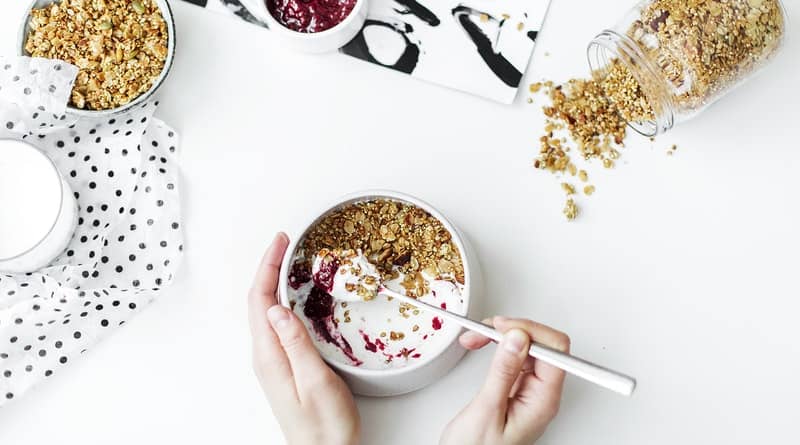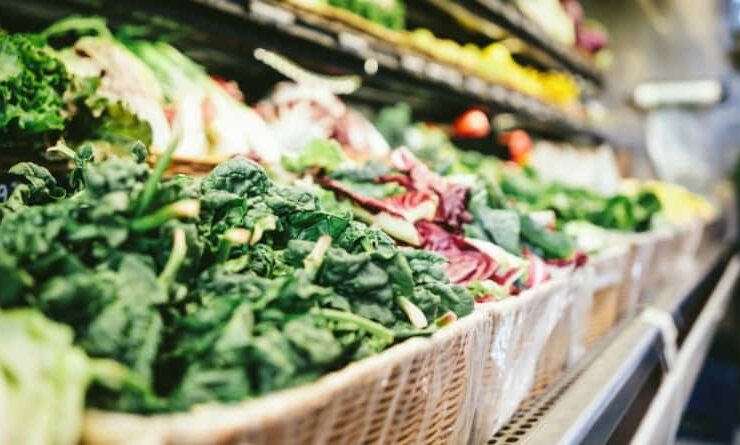How to Eat For Vibrant Health and Energy

For many people, food is a great source of pleasure. You bond over meals with your family, friends, and dates. You celebrate movies with salty snacks and special occasions with cake or champagne. You even drown your sorrows in ice cream, chocolate, or bags of chips. But the real purpose of food is to fuel your body, to rebuild your cells, and to give you energy. If you’re interested in reshaping your diet to focus on creating vibrant health and energy, here’s where to begin.
Eat Less But More Often
Image via Flickr by Jeff Kontur
If your body isn’t regulating your energy levels appropriately, try eating smaller meals every few hours. Delivering a steady supply of nutrients can help reduce fatigue and sluggishness. Try eating a piece of fruit or a handful of nuts. Eating a smaller lunch, such as a bowl of light soup or half a sandwich, and then having a healthy snack a few hours later can help prevent the afternoon energy slump that many people face.
Watch Your Calories
Most Americans are overeating, especially when it comes to simple carbohydrates. To prevent overeating and to get a handle on calorie consumption, try tracking your calories with the Lifesum app. Keeping track of each macronutrient group, which includes fats, proteins, and carbohydrates, is a good way to discover where the problems lie in your diet.
Avoid Packaged Foods
Power bars, protein bars, and natural cereals are often marketed as healthy foods that will give you more energy. Yet you’re still better off eating whole foods like fruit or nuts. Your diet should consist mostly of a whole, plant-based foods, eaten with lean protein. Cooked and raw vegetables, soups, salads flavored with fresh fruit or vegetables instead of bacon bits and cheeses, lentils, beans, and fish should be the foundation of your diet.
Up Your Restaurant Game
At restaurants, avoid appetizers, which are often fried or fatty, as well as desserts. Stick with water as a beverage. After all, most beverages, including many juices, load you up with empty calories without providing any nutrition or fiber. Soups are usually the healthiest choices on the menu. Restaurant salads are often very high in fat and calories, so don’t assume all salads are healthy.
Stay Hydrated
Keeping your energy level high requires hydration. Carry a refillable water bottle. If you don’t love drinking water, experiment with sparkling water and a splash of fresh fruit juice. Wean yourself off diet sodas, sugary juices, alcohol, and other beverages that fill you up without contributing nutrients.
Eat More Plant-Based Iron
Many women are deficient in iron, and if you’re trying to eat less saturated fat, your iron consumption may drop as well. The best iron-rich foods to incorporate into your routine are beans, lentils, spinach, tofu, and sesame seeds. Eating them along with foods rich in vitamin C can help your body absorb and use the iron more efficiently.
You may always want to celebrate special occasions with food and enjoy occasional treats. When you direct the bulk of your eating toward fueling your body with energy and nutrients, you can afford the occasional indulgence.
What's Your Reaction?
Newly middle-aged wife of 1, Mom of 3, Grandma of 2. A professional blogger who has lived in 3 places since losing her home to a house fire in October 2018 with her husband. Becky appreciates being self-employed which has allowed her to work from 'anywhere'. Life is better when you can laugh. As you can tell by her Facebook page where she keeps the humor memes going daily. Becky looks forward to the upcoming new year. It will be fun to see what 2020 holds.








